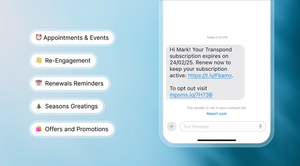The Google Ads platform offers businesses a powerful way to reach potential customers at the right moment and has become a crucial part of digital marketing strategies.
Whether you’re promoting a product, service or brand, knowing how to write effective Google ads can positively impact your marketing strategy.
However, navigating online advertising can feel daunting. This guide will equip you with the knowledge and strategies to build winning Google Ads campaigns that drive sales and propel your business growth.
What is Google Ads?
Google Ads, formerly known as Google AdWords, is an online advertising platform where advertisers bid to display brief advertisements, service offerings, product listings or videos to web users. These ads can appear in Google search results and across the Google Display Network, which includes millions of websites and apps.
Ads on Google can be classified into several types, which we’ve outlined below.
Search ads
These are text ads that appear on Google search results pages, known as Google search ads. They are typically shown at the top and bottom of the search results and are triggered by specific keywords that users search for.
Display ads
These are visual banner ads that appear on websites within the Google Display Network, commonly referred to as Google display ads. They can include text, images and animations, and are used to attract attention across a wide range of sites.
Video ads
These ads appear on YouTube and across Google’s video partners. They can be skippable or non-skippable and are used to engage users with rich media content.
Shopping ads
Google Shopping Ads are product listings that appear in Google Shopping and search results. They display product images, prices, and merchant names, and are particularly effective for e-commerce businesses.
App promotion ads
These ads are designed to drive app downloads and can appear across Google Search, YouTube, Google Play, and within other apps on the Google Display Network.
By using these different types of ads on Google, you can effectively reach your target audience through various channels and formats, maximizing your advertising impact.
The importance of Google ads
Ads on Google offer several advantages that make them an integral part of modern marketing strategies.
For example, Google Ads allows you to target specific keywords, locations, languages, devices and even the time of day.
You can also set your budget and only pay when someone clicks on your ad (Pay-Per-Click or PPC). As well as this, Google Ads provides detailed analytics to track the performance of your campaigns.
Finally, you can also create various ad formats and adjust your campaigns based on performance.

Understanding the Google Ads landscape
Google Ads operates through a system where businesses bid on keywords – those essential search terms people use to find the products and services they need.
When someone enters a relevant keyword, your ad has the potential to appear in a prominent position on the search results page, directly in front of your target audience.
Google considers factors like your bid amount, the relevance of your ad to the search query, and the quality of your landing page to determine which ads are displayed and in what position. This enables you to place your message directly in front of potential customers who are actively searching for the solutions you provide. This targeted approach allows you to maximize your advertising budget and generate a strong return on investment.
Writing compelling ad copy
Writing Google ads copy is the first impression you make on potential customers, so crafting clear, concise, and persuasive messages is crucial. Below, we’ve listed how to write winning Google ad copy components that will grab attention and drive clicks.
Headlines (max 30 characters):
Google text ads require strong headlines as the cornerstone of effective ad copy. They should capture attention immediately and clearly communicate your value proposition.
To write strong copy, make sure to highlight what your product or service can do for the customer. Use dynamic verbs to create a sense of urgency and encourage clicks.
Finally, words that evoke curiosity, desire or fear can be powerful motivators.
Descriptions (max 90 characters)
Ad descriptions, including Google ad descriptions, provide the opportunity to elaborate on your headline and entice potential customers to learn more. You can craft effective descriptions by briefly explaining what makes your offering unique and how it solves customer problems.
Make sure to also tell users what you want them to do next, whether it’s visiting your website, downloading a brochure or contacting you directly.
Keywords are the foundation of Google Ads targeting. They’re the terms people use to search for products or services like yours. By including relevant keywords in your ad copy, you ensure your ads are shown to users with high purchase intent.
Use keyword research tools like Google Keyword Planner to identify high-volume, low-competition keywords relevant to your target audience.
Negative keywords allow you to exclude irrelevant searches from triggering your ads. This helps ensure your budget is spent reaching the right audience. For example, if you sell high-end laptops, you might want to add “used laptops” as a negative keyword.
Ad extensions
Ad extensions are a powerful way to enhance your ad and provide additional information to potential customers, increasing the ad’s real estate and overall appeal. Below we’ve listed some popular ad extensions to consider.
- Sitelink extensions: Showcase additional pages on your website, allowing users to navigate directly to relevant content. Sitelinks can be used in the ad group to add supporting information to the primary ad copy, essentially functioning as in-site navigation directly in the SERPs.
- Call extensions: Display your phone number directly within the ad, making it easy for potential customers to connect with you instantly.
- Location extensions: Highlight your business address or service area, particularly useful for attracting local customers.
Copywriting models for Google ads
Creating effective Google ads requires a solid understanding of various copywriting models. These models provide frameworks to craft engaging ads that drive action. Below we’ve listed some of the key models to consider.
AIDA Model (Attention, Interest, Desire, Action)
The AIDA model is a classic framework used to guide potential customers through the purchasing journey.
- Attention: Capture the audience’s attention with a strong hook or an eye-catching visual.
- Interest: Spark interest by highlighting a key benefit or intriguing fact.
- Desire: Create desire by showcasing what makes your product or service unique.
- Action: Encourage the user to take action with a clear call to action.
An example of the AIDA model could be:
- Attention: "Unlock your potential with our online courses!"
- Interest: "Join thousands of learners and gain new skills."
- Desire: "Exclusive courses taught by industry experts."
- Action: "Sign up today and start learning!"
PAS Model (Problem, Agitation, Solution)
The PAS model focuses on addressing the audience's pain points and offering a solution.
- Problem: Identify a common problem your target audience faces.
- Agitation: Stir up emotions by emphasizing the impact of the problem.
- Solution: Present your product or service as the solution.
An example of the PAS model could be:
- Problem: "Struggling to stay organized?"
- Agitation: "Missing deadlines and feeling overwhelmed can be frustrating."
- Solution: "Try our project management tool for seamless organization."
4Cs Model (Clear, Concise, Compelling, Credible)
This model emphasizes the importance of clarity and brevity in your ad copy.
- Clear: Ensure your message is easy to understand.
- Concise: Keep it short and to the point.
- Compelling: Make it interesting and engaging.
- Credible: Establish trust and reliability.
An example of the 4Cs model could be:
- Clear: "Boost your website’s speed."
- Concise: "Faster sites retain more customers."
- Compelling: "Get a 30% increase in page load times."
- Credible: "Trusted by over 1,000 businesses."
Targeting the right audience
Having an effective marketing strategy is crucial to success in producing popular ads. Targeting ensures your ads reach the right people at the right time, maximizing your impact and minimizing wasted spend. Google Ads offers a powerful suite of targeting options to help you refine your audience. Below we’ve listed some of the ways you can target the right audience.

Ad groups
Using ad groups to combine individual-level data and stats can further enhance your targeting strategy.
User factors and behaviors
Reach users based on factors like age, gender, income and parental status. This allows you to tailor your message to resonate with specific demographics.
Also, target users within a specific location (country, region, city or even radius around your business). Ideal for promoting local services or highlighting regional offerings.
Audience targeting allows you to reach people based on their interests and browsing behavior. For example, if you sell marketing software, you can target users who have recently visited websites related to marketing automation.
Keywords
As mentioned earlier, keywords are the foundation of targeting. By incorporating relevant keywords in your ad copy, you ensure your ads appear when users search for solutions you provide.
But targeting goes beyond just matching keywords. Understanding the intent behind a search query is crucial. Someone searching for “running shoes” might be in the browsing stage, while “best running shoes for marathons” indicates a purchase-ready user. Tailor your ad copy to the specific search intent.
Different devices
People use different devices for their online journeys. You can choose to display your ads on desktops, smartphones, tablets, or any combination depending on your target audience’s browsing habits.
Retargeting
Ever visited a website and then seen ads for that same company follow you around the internet? That’s retargeting. It’s a highly effective way to stay top-of-mind with website visitors who haven’t converted yet. You can create targeted ads reminding them about your products or services, enticing them to return to your website.
By using this combination of targeting options, you can create highly focused campaigns that reach the exact audience most likely to convert.
Creating a landing page for conversions
Your landing page is the final destination for users who click on your ad. It's where you make the sale, capture the lead or achieve your desired conversion goal. Below, we’ve outlined how to make a well-designed landing page.
Alignment with ad message
Ensure a seamless transition from your ad to the landing page. The message, offer, and visuals on your landing page should directly correspond to what users saw in your ad. This creates a positive user experience and avoids confusion.
User-friendly design
First impressions matter. Your landing page should be visually appealing, easy to navigate, and load quickly on all devices. Complex layouts or slow loading times can lead to frustrated users who abandon their purchase before converting.
Conversion optimization
The ultimate goal of your landing page is to convert clicks into leads or sales. This means crafting clear and persuasive copy that highlights the benefits of your offering and includes a strong call to action. Tell users exactly what you want them to do next, whether it's downloading a white paper, subscribing to your newsletter or making a purchase.
Strong visuals
High-quality visuals like images and videos can significantly enhance your landing page's impact. Use visuals that are relevant to your offering and effectively communicate your message.
By creating a user-friendly and conversion-optimized landing page, you ensure a smooth journey for users who click on your ad, ultimately maximizing your return on ad spend.
Optimizing your campaigns for success
Launching your Google Ads campaign is just the beginning. To truly maximize results, ongoing optimization is key. Below we’ve listed some ways you can optimize your campaign.
Data
The platform provides a wealth of metrics to track your campaign performance, including impressions, clicks, conversions and cost-per-click (CPC). Regularly analyze this data to identify areas for improvement. Are certain keywords underperforming? Is your ad copy not resonating with your audience? Use the data to pinpoint weaknesses and make data-driven decisions.
A/B testing
A/B testing allows you to compare different versions of your ad copy, landing pages and targeting strategies to see which ones perform best. This data-driven approach helps you identify the most effective elements for your campaigns. Additionally, using a Google ads generator can streamline the process of creating targeted ad content for A/B testing.
Campaign budgets
Google Ads offers various bidding strategies, allowing you to set the maximum amount you're willing to pay for a click or conversion. Monitor your budget spend and adjust your strategy as needed to ensure you're getting the most out of your investment.
Continuously refine
As you gather data, you may identify new audience segments or keywords that chime better with your target market. Continuously refine your targeting to ensure your ads reach the right people.
The world of online advertising is constantly evolving. Stay up-to-date on the latest Google Ads features and best practices to keep your campaigns competitive.
Conversion tracking
Conversion tracking is a crucial element in measuring the success of your Google Ads campaigns. It allows you to see what actions users take after clicking on your ad. This could be a sale, a lead form submission, a newsletter signup or any other action you define as a valuable conversion.
By tracking conversions, you gain valuable insights into how effectively your campaigns are driving the desired outcomes. This data helps you optimize your ad copy, landing pages and targeting strategies to maximize conversions and ultimately achieve your business goals.
Case studies of successful Google Ads campaigns
Analyzing successful Google Ads campaigns can provide valuable insights into what strategies and techniques work effectively. Below, we’ve listed real-world examples.
Grammarly
- Headline: "Write Better with Grammarly"
- Description: "Improve your writing with Grammarly. Get real-time feedback on your grammar, punctuation, and more."
- Elements of success: Grammarly’s ad highlights a specific pain point (improving writing) and offers a direct solution. They ran a series of successful campaigns, which led to a significant increase in their user base. Grammarly's emphasis on real-time feedback and addressing a common problem helped boost their click-through rates (CTR) and conversions.
AdRoll
- Headline: "Retargeting Made Easy"
- Description: "Get started with AdRoll and improve your conversion rates with powerful retargeting solutions. No credit card required."
- Elements of success: AdRoll used Google Ads to promote their retargeting software. Their clear and straightforward messaging, combined with a compelling offer (no credit card required), helped attract new users. The emphasis on easy setup and immediate benefits resonated well with their target audience.
Sephora
- Headline: "Discover Your Perfect Fragrance"
- Description: "Find the latest perfumes and colognes at Sephora. Free samples with every order."
- Elements of success: Sephora's Google Ads campaign focused on personalized beauty experiences. By offering free samples and using compelling product images, they attracted a large number of clicks and conversions. The ad's emphasis on new fragrances and exclusive offers appealed to Sephora’s target market of beauty enthusiasts.
Lessons learned from these campaigns
Analyzing the successful Google Ads campaigns from Grammarly, AdRoll and Sephora reveals several key takeaways that can be applied to optimize your own advertising efforts.
Grammarly
Grammarly’s campaign highlighted the importance of personalized ads. By tailoring their message to address specific user needs—such as improving writing skills—they effectively captured their audience's attention. This emphasizes the need for personalized ad copy that speaks directly to the pain points and desires of your target audience.
AdRoll
AdRoll's campaign demonstrated the power of straightforward advertising and attractive offers. Using Google Ads to promote their retargeting software, AdRoll attracted new users with a message resonating with their target audience. Clear messaging and attractive offers can make your ads more compelling and encourage users to take action.
Sephora
Sephora's campaign demonstrated the impact of clear, attractive offers. Their ads featured enticing promotions like free samples with every order, which drove higher click-through rates and conversions. Offering easily understood, attractive deals or incentives can make your ads more compelling and encourage users to take action.
All three companies
All three companies maintained consistent brand messaging across their ads. This consistency helps build brand recognition and trust. Ensure that your ad copy aligns with your overall brand voice and message to create a cohesive experience for your audience.
These campaigns also showed the importance of strategic keyword use. By targeting relevant, high-performing keywords, they ensured their ads reached the right audience. Conduct thorough keyword research and regularly update your keyword list to maximize your ad visibility and relevance.
Advanced Google Ads strategies
Once you've mastered the fundamentals, Google Ads offers a vast toolbox of advanced strategies for experienced users looking to elevate their campaigns. Below, we’ve outlined a few techniques to explore.
Conversion funnels
Conversion funnels allow you to create targeted ad sequences that guide users through a specific journey, ultimately leading to a desired action like a consultation or demo request. You can tailor each stage of the funnel with specific messaging and ad formats, guiding users towards conversion.
Audience insights and lookalike audiences
Dive deeper into your audience demographics. Google Ads offers important audience insights that reveal valuable details about your existing customer base. Use this data to create "lookalike audiences" – targeting new users who share similar characteristics with your most valuable customers. This allows you to reach a highly relevant audience with a higher conversion potential.

Dynamic Search Ads (DSA)
Let Google do the keyword heavy lifting. Dynamic Search Ads leverage your website content to automatically generate targeted headlines and descriptions. This can be a great time-saver for campaigns with a large and ever-changing product or service offering. Additionally, using AI-powered tools to create ads quickly allows you to allocate your time and budget towards growing your customer base instead of writing ads.
Responsive display ads
Embrace responsive design for maximum reach. Responsive display ads automatically adjust their size and layout to fit various ad spaces across the Display Network. This ensures your ads appear in the most optimal format for each website or app, maximizing your visibility and potential clicks.
Third-party audience targeting
Expand your reach beyond Google's network. Google Ads allows you to use data from reputable third-party providers to target audiences on other websites and platforms. This opens doors to reaching highly specific user segments outside the Google ecosystem.
These are just a few examples of the advanced strategies waiting to be explored within Google Ads. By incorporating these techniques and continuously optimizing your campaigns, you can unlock even greater results and achieve your marketing goals.
How Capsule can elevate your Google Ads
Capsule CRM, especially when used alongside Transpond can be your secret weapon in managing your marketing efforts. Our user-friendly platform streamlines tasks, simplifies lead nurturing, and empowers you to build stronger customer relationships once you’ve won business from ad campaigns.
Take control of your marketing success. Sign up for a free Capsule CRM trial today and see how we can help you drive the maximum return for your Google Ads campaigns.
Frequently Asked Questions
Many beginners jump right in without proper planning. This can lead to using overly broad keywords that attract irrelevant clicks, neglecting negative keywords that filter out unwanted searches, or crafting generic ad copy that’s not in tune with the target audience. Remember, keyword research, targeted ad groups and compelling ad copy are key.
With a smaller budget, focus on laser-targeted campaigns. Use long-tail keywords with lower competition and leverage conversion tracking to identify the keywords that actually drive valuable leads or sales. Prioritize those keywords and consider automated bidding strategies like "Maximize Conversions" to optimize your budget for specific goals.
Understanding these two metrics is crucial for optimizing your budget. CPC (Cost Per Click) refers to the amount you pay each time someone clicks on your ad. CPM (Cost Per Thousand Impressions) represents the cost for every thousand times your ad is shown, regardless of clicks. If your goal is maximizing clicks and driving traffic, CPC might be a better choice. If you want brand awareness and wider visibility, CPM could be a good option.
Quality Score is a Google Ads metric that reflects the relevance of your ad and the quality of your landing page. A higher Quality Score can significantly lower your CPC. To improve it, ensure your ad groups contain relevant keywords, write engaging ad copy that aligns with those keywords, and provide a seamless user experience on your landing page that directly relates to your ad.
Effective keyword research is the foundation of successful campaigns. Use tools like Google Keyword Planner to identify relevant keywords with high search volume but lower competition. Consider the search intent behind the keywords – are users browsing for information or ready to buy? Tailor your ad copy and landing pages to address that specific intent for optimal results.




